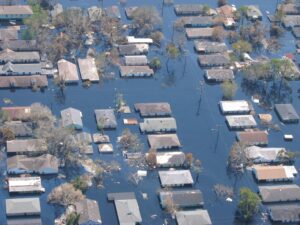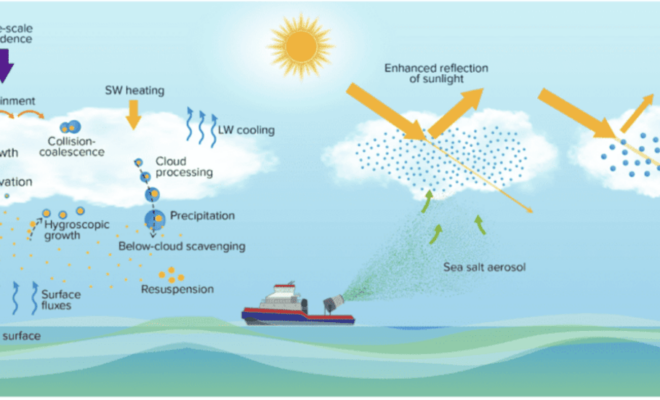There are small-craft facilities on the north side of Anacostia River just above the mouth; between the third and fifth bridges; and at Bladensburg, 7 miles above the mouth.
The waterfront facilities are on the eastern side of Washington Channel. Pier 5, 1 mile above Hains Point, has depths of about 23 feet at the outer end; it is the headquarters of the harbormaster and is used by his patrol boats and Police and Fire Department. Pier 4, just northward, has depths of about 23 feet at the outer end; it is used by excursion boats.
Slips and minor repair facilities for pleasure craft are at the north end of Washington Channel. Hull and engine repairs can be made: lift capacity, 20 tons. Water, berthing with electricity and marine supplies are available.
The District of Columbia Harbormaster, who is the officer commanding the Harbor Precinct of the Metropolitan Police Department, regulates the operation, navigation, mooring, and anchoring of all vessels within the waters of the District of Columbia and enforces all laws and regulations relating thereto. The person in charge of any vessel, 26 feet or more long, entering the harbor, shall, if he intends to remain over 24 hours, report the date and time of arrival without delay and shall also report immediately before finally departing, to the harbormaster at the Harbor Precinct wharf, Maine Avenue and M Street, SW., or to any police officer under his command. Permission to anchor in the District of Columbia must be obtained from the harbormaster. Both the harbormaster and the police boat monitor VHF-FM channel 16; call sign KUF-703.
Navigation:
Click the “Map View” button above to see a chart of this harbor.
Washington, DC, on the east side of Potomac River 96 miles above the mouth, is the Capital of the United States. The city, with its impressive memorials and public buildings, is one of the most beautiful in the world and is host to a constant stream of visitors. Prominent from the river are the Capitol Dome, the Washington Monument, and the Lincoln and Jefferson Memorials.
At Mile 94.2 is the junction of Potomac River with Anacostia River to the eastward, Washington Channel to the northward, and Georgetown Channel of the Potomac River to the westward. The lighted junction buoy also marks the outer end of the shoal making southerly from Hains Point, 0.4 mile north of the junction. Washington Harbor comprises the navigable waters upstream from this junction.
A dredged channel leads from the Potomac River off Hains Point into the Anacostia River to a basin off Washington Navy Yard, through the 11th and 12th street bridges, and to a turning basin about 2.0 miles above the Hains Point Junction Lighted Buoy (38°51’06″N., 77°01’20″W.).
Harbor regulations prescribe a speed limit of 6 m.p.h. between the entrance to Anacostia River and the Benning Road Bridge, a distance of 4.4 miles.
The Anacostia River is crossed by 10 bridges between the entrance and the head of navigation. The Frederick Douglass Memorial Bridge (South Capitol Street Bridge), 1.4 miles above the entrance, has a swing span with a clearance of 40 feet. In 1986, it was reported that the bridge is not tended. At least 24 hours notice is required for openings; telephone 202-727-5522.
The Eleventh Street Bridge, 2.2 miles above the mouth, is a fixed bridge with a clearance of 28 feet. Twelfth Street Bridge has a fixed channel span with a clearance of 28 feet. The remaining fixed bridges have a minimum width of 40 feet and clearance of 12 feet. The CSX Railroad Bridge, 3.3 miles above the mouth, has a vertical-lift span with a width of 33 feet and clearance of 5 feet down and 29 feet up.
Overhead cables of unknown clearances cross the river on either side of the CSX Railroad Bridge, about 6.5 miles above the mouth.
The waterfront of Anacostia River extends along the north side for about 3 miles above the entrance. The Washington Navy Yard Annex occupies the area just above the first bridge to the second bridge; depths at the easternmost pier (which is normally used for visiting vessels) range from 15 to 17 feet. Most of the other piers and bulkhead wharves are privately owned. Oil terminals are just below the first bridge and just above the third bridge.
Washington Channel extends northward along the east side of Hains Point for 2 miles to the Fourteenth Street causeway. The channel is unmarked above Hains Point. A fixed highway bridge at the upper end of the channel has a clearance of 37 feet.
Georgetown Channel is that part of the Potomac River between Hains Point and just above Chain Bridge. In 2007, the midchannel controlling depth was 8.6 feet to the George Mason Memorial Bridge, thence 11.2 feet at midchannel to the Arlington Memorial Bridge, thence 13.9 feet at midchannel to the Francis Scott Key Bridge at Georgetown. The channel from Key Bridge to Chain Bridge, about 2.7 miles above, has unpredictable currents, and numerous shoals and rocks. This part of the channel is used by small craft with local knowledge; mariners are advised to exercise caution.
Georgetown Channel is crossed by eight bridges between Hains Point and Chain Bridge, Mile 101. All bridges have either fixed spans or drawspans fixed in the closed position. The minimum width of the bridges is 104 feet and the clearance is 18 feet.
The Tidal Basin is on the northeast side of Potomac River 1.6 miles above Hains Point. A fixed bridge with a clearance of 11 feet crosses the entrance; tide gates obstruct the entrance.
Directly across the river from the Tidal Basin is the Pentagon Lagoon. In 2000, the controlling depth was 7.5 feet in the entrance channel, thence depths of 5 to 8 feet were at the marina on the north side of the lagoon. Depths of about 2 to 7 feet are available in the rest of the lagoon. The fixed bridge over the entrance is a stone arch, 100 feet between the piers, with a clearance of 18 feet over the middle 41 feet.




